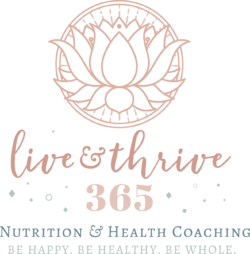 What Is Mindset?
What Is Mindset?
The key to increasing your confidence in any given area begins with your mindset. Specifically, developing a growth mindset. If you didn’t get a chance to check out the first post of this series on confidence, pause and go check it out Anatomy of Confidence: Breaking It Down. Then come back to this one!
So that we’re on the same page, I’m defining mindset as your belief in your ability to change and grow. You can have a fixed mindset where you don’t believe you can change things–that things happen to you and are out of your control. Or you can have a growth mindset where you believe that you are capable of growth and change–that things may happen to you but you can learn from them.
Everyone has a little bit of a fixed mindset about some things, but the ability to acknowledge that you have more power than you may originally think can help you grow, learn, and problem-solve. Understanding that you (and your thinking) might be the roadblock can help you see beyond the scope of what’s in front of you, giving you the ability to see the problem as an opportunity to learn instead of just another failure.
The Locus of Control and a Bias Toward Action
There are two types of locus of control: external and internal. An external locus of control is usually found in someone who is struggling with a growth mindset. A person with an external locus of control may feel that life is happening to them. Because of this, they may have a victim mentality and tend to have a bias toward inaction. They may feel that their lives are out of control so nothing they do can change the circumstances or make a difference in their lives.
An internal locus of control is usually found in someone who has a growth mindset. These people understand that while things may be happening in their lives, they believe they still have control over the outcome itself or their response to the outcome. These people develop a bias toward action that allows them to feel empowered to direct their own lives.
How Might This Look In Your Life
If you have a fixed mindset and lean towards a bias of inaction, you may feel that nothing you do can change your circumstances. At work, you may believe your co-workers don’t like you. You may feel that your boss has it out for you because you didn’t get that promotion–again. You may think that talents and intelligence are innate and can’t be learned. If you feel this way, you can join many people who believe this. With the amount of emphasis in this culture that we put on talent and intelligence, it’s no wonder that you may think you can’t improve in some areas of your life.
If you have a growth mindset, you believe that you can increase everything with practice and hard work. Guess what? We can all increase our talents and intelligence with some patience and brain work!
Three Parts to Developing a Growth Mindset
Awareness: Become aware of your self talk and fixed mindset triggers. Ask yourself what your inner voice is telling you? Do the statements from your inner voice often contain black and white thinking such as “I’m never going to figure this out” or “I shouldn’t bother trying since I’m just going to fail”? Next, identify what you were feeling and what was happening that triggered this thinking.
Perspective: Now that you’ve identified what your inner voice is telling you and what triggered the voice to start, ask yourself two questions: “What is a more realistic and optimistic way to look at this situation?” and “How can I look at this situation differently?” Next, rephrase your negative statement. If you told yourself “I’m never going to figure this out” you can rephrase it to “There are a lot of things I’ve done it my life that I didn’t know how to do at first. It may take me a little time, but I can figure this out with practice.”
Action: Think about what you learned from the experience then think about how you will respond next time you find yourself in a similar situation. Visualize yourself repeating the same steps of awareness and perspective then take action by figuring out how you will learn from the experience and what you will do differently next time.
Final Steps

Photo Credit: Katrina Wright at Unsplash
Now that you have developed awareness and perspective and you’ve taken action to respond differently in the future, you can continue to develop your growth mindset. You can use any (or all) of the affirmations below to help remind yourself that a growth mindset is possible to practice and improve daily. Write them down and look at them daily.
- Challenges, risks, and failures do not reflect that I am a failure; they are opportunities for me to grow and improve.
- What other people think about me is none of my business. I no longer allow other people’s opinions and judgments to hold me back from living a life of fulfillment and reaching my potential.
- I move past the discomfort of making mistakes quickly because I learn the lesson and allow it to help me improve so I can do better next time.
- I am the master of my thoughts, emotions, and actions and I do not give my power away by reacting to others criticisms, judgment, or actions in a negative way.
- Having to exert effort in order to be good at something is a good thing because it shows me that I am capable of learning and improving. I love knowing that I am not limited to my current strengths.
Okay, my sweet friend. I know you can build your growth mindset with the new tools I have given you for your Confidence Toolkit.
Check out the next post in the series Anatomy of Confidence: Self-Doubt!
Let’s do this!
💕Laura


